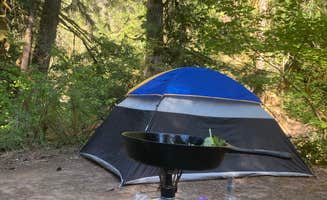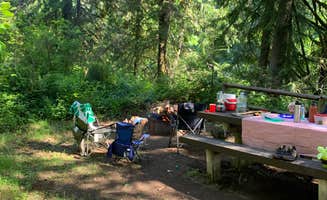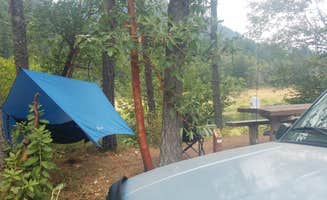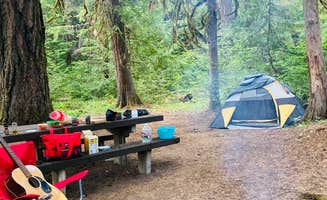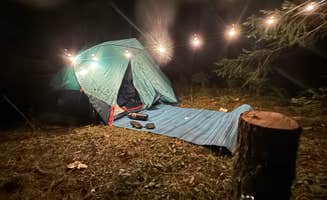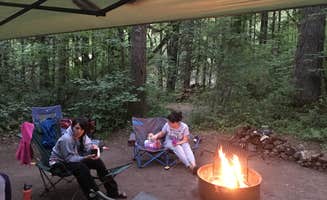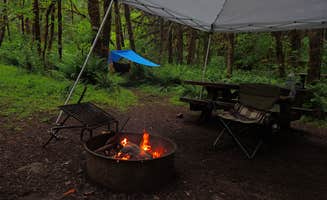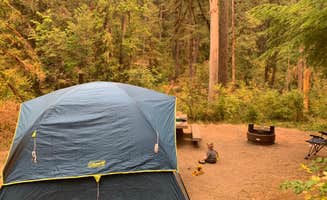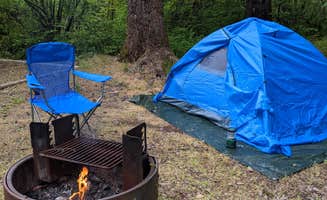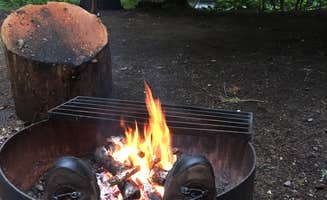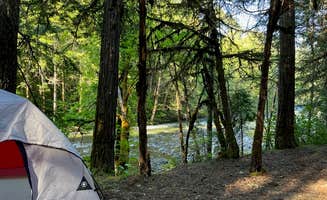Dispersed camping areas around Oakridge, Oregon center around the Willamette and Umpqua National Forests at elevations ranging from 1,200 to 4,000 feet. The surrounding landscape features dense Douglas fir forests, volcanic formations, and numerous waterways with the Middle Fork Willamette River serving as a central corridor. Summer temperatures typically range from 45°F at night to 85°F during peak day hours, with occasional thunderstorms in July and August.
What to do
River swimming and wading: The Middle Fork Willamette River and Salmon Creek offer several natural swimming spots. At Salmon Creek Falls Campground, campers enjoy riverside relaxation. One visitor notes, "The water is crystal clear but also very cold. Love this spot. Will be going again in the years to come."
Waterfall hikes: Within 30 minutes of most Oakridge campgrounds, several waterfall trails provide moderate hiking options. Near Rujada Campground, "You are next to a few waterfall hiking trails, one of which was pretty kid friendly." Another camper mentions, "If you want bigger hiking payoffs, just up the road approx. 6 miles, you can find 'Pinard', 'Moon', and 'Spirit falls'. Each are around 2 easy hiking miles and worth hitting."
Mountain biking: The trail systems around Oakridge support extensive mountain biking. The singletrack through Willamette National Forest ranges from beginner flows to technical descents. Trails remain accessible from May through October, with optimal conditions in June and September when trails are neither too dusty nor too muddy.
What campers like
Riverside campsites: Some of the most sought-after campsites sit directly on waterways. At Black Canyon Campground, "Every site is gorgeous, lots of forest in between so you have privacy. All of the best spots along the river with a view are first come first serve." Another visitor reports, "Our site was great with a trail down to the river and a rocky beach."
Alpine lake access: Higher elevation camping provides cooler temperatures and lake activities. Blair Lake Campground sits at a higher elevation with "a gorgeous little alpine lake with a surrounding ridge." As one camper describes, "The lake itself is warm and great for swimming and floating, and I even saw some fish jumping so I imagine you could do some catching as well."
Secluded forest sites: Many smaller campgrounds offer more privacy and seclusion. At Hobo Camp Campground, visitors appreciate the quiet setting. One camper notes, "I really recommend this place if you want to just relax. Super quiet and beautiful. NO CELL SERVICE (you don't need it)."
What you should know
Road conditions: Many campgrounds require travel on gravel forest service roads. Access to Blair Lake involves "about 20 miles from Oakridge up a washboard gravel road. I suggest an awd/4x4, or a car that can handle the terrain."
Train and traffic noise: Several campgrounds near the river also sit near rail lines. At Cedar Creek Campground, "The road is not far, but you will feel like you are out in the middle of nowhere." At Black Canyon, campers note "The train tracks are literally across the river. Maybe 200 ft away. The train runs all day and sadly all night."
Limited amenities: Most forest service campgrounds have minimal facilities. One camper described Lund Park as "very minimalist. 2 vault toilets, no water, and if you get the right site you can't see or really hear your neighbors." Bring adequate water supplies or water filtration systems for longer stays.
Tips for camping with families
Swimming holes: Creekside camping areas often feature safe wading spots for children. At Lund Park Forest Camp, a visitor noted: "Easy Access to the Brice creek trail, and the Tressel creek falls. Also there is gold panning allowed in the creek." This provides natural entertainment for children.
Playground access: Some campgrounds maintain small play areas. Rujada Campground features "a nice playground which did surprise us that my kiddos liked. Along with access to a nice swimming hole next to the campground."
Wildlife viewing opportunities: Children can observe salamanders, frogs, and small mammals around the lakes and streams. At Blair Lake, one camper mentioned "Cute lake, a lot of salamanders," making it an informal nature study opportunity.
Tips from RVers
Site selection for larger vehicles: Most campgrounds have limitations for RV length. At Casey's Riverside RV Resort, "Every site is big-rig friendly and almost perfectly level. Minimum work getting setup." Another RVer noted, "The pull through was plenty long. We were able to maneuver our 5th wheel to position it around a large shade tree."
Reservation recommendations: Popular RV sites fill quickly during summer months. As one experienced camper advised, "Unless you want to stay for a day or two or move sites every other day, you need to reserve early."
Seasonal considerations: Fall offers less crowded camping but requires preparation. Most forest service campgrounds close by mid-October, with facilities winterized by late September. Low-elevation campgrounds near Oakridge may remain accessible into November depending on snowfall.


